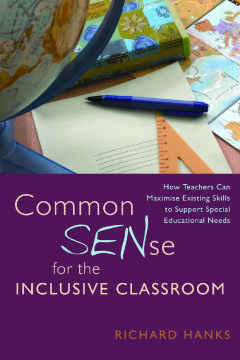
Additional Information
Book Details
Abstract
This book condenses everything the mainstream teacher needs to know about Special Educational Needs into one short volume, allowing them to pick and choose teaching methods that suit them and each individual student.
Following a revolutionary 'a la carte' concept, the book acts first and foremost as a teaching menu, offering a variety of options that teachers can use as they see fit. Written in a jargon-free, accessible style, the author gets to the heart of issues associated with teaching mixed ability classes, offering more flexible alternatives to traditional teaching strategies and suggesting helpful approaches that really work. Maintaining that teachers are usually far more capable of handling situations than they believe themselves to be, the book allows them to choose methods that suit their own personal style and the specific needs of their students. Essential background information on special educational needs including dyslexia, dyspraxia, Asperger's Syndrome and Attention Deficit Hyperactivity Disorder is included throughout.
Combining practical methodology with factual information about learning difficulties, this guide will be an invaluable resource for non-specialist teachers supporting children with special educational needs in inclusive classrooms.
Richard Hanks, M. Ed has extensive experience of working with children with special needs, and was Headteacher of two schools in Avon and Hampshire before moving on to become Head of Learning Support at a school near Bath. He is currently a member of the Independent Monitoring Board of a Young Offenders' Institute and of the Members' Council of Somerset Partnership NHS Foundation Trust.
This book would be a very useful addition to any staffroom, giving sensible, realistic and practical advice to enable the non specialist or newly qualified teacher to develop the understanding and skills required to meet the needs of all pupils in an inclusive classroom.
NAPLIC Matters
There is much to like in this book. The writer exhibits true empathy with these learners and a passion to help others to understand and support them and the book contains a mass of practical suggestions which can be adopted swiftly and will indeed help teachers to ensure that their classrooms are places where these learners can contribute and learn. The style is informal and the many anecdotes and case studies make the book readable and accessible and help readers to relate to students in their groups... I would recommend this as an introduction to these common learning differences for non-specialist teachers and TAs in that it does provide a real range of practical suggestions... is engaging the obvious warmth and commitment to these learners that Richard Hanks brings.
Patoss Bulletin
Teachers receive a fine guide to developing a teaching approach for creating an inclusive classroom that allows special needs students to work effectively in a mainstream environment, and will find this a top choice for any interested in practical methods about learning difficulties and how they operate in a traditional environment. Chapters offer basics on special educational needs, then discuss common issues and alternatives to traditional teaching methods. The methods here have been field-tested and proven effective.
The Midwest Book Review
